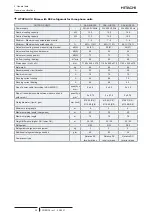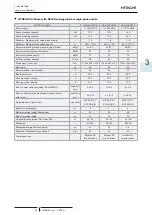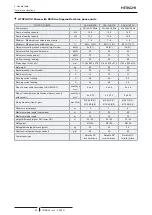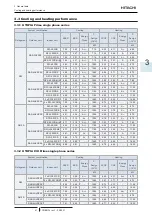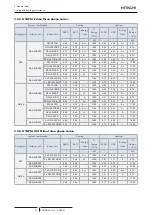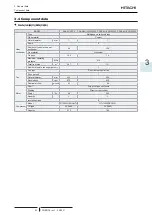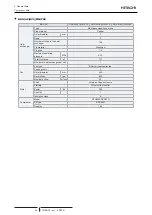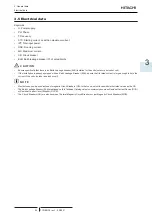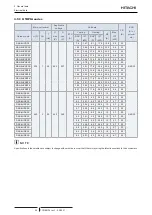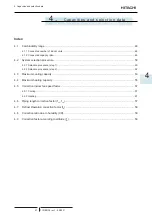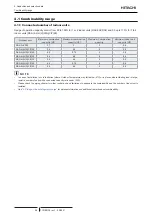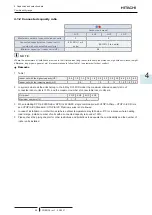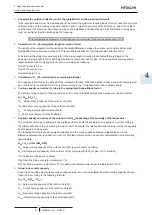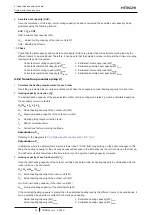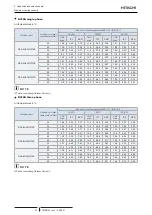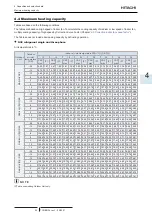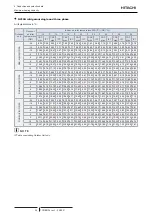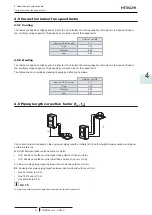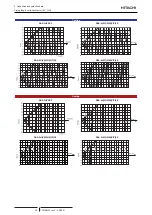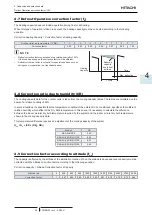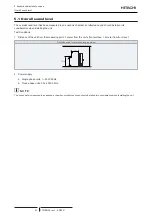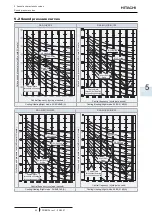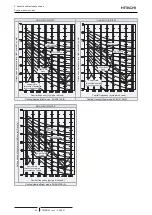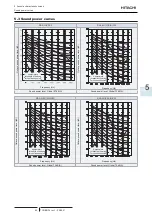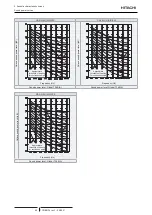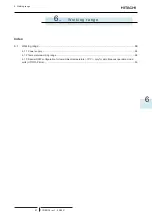
4 Capacities and selection data
System selection procedure
TCGB0136 rev.1 - 05/2021
52
9
Sensible heat capacity (
SHC
)
Once the calculation of the indoor units cooling capacity has been completed, the sensible heat capacity can be
calculated using the following formula:
SHC
=
Q
CI
x
SHF
SHC
: Sensible heat capacity (kW).
Q
CI
: Actual cooling capacity of the indoor unit (kW).
SHF
: Sensible heat factor.
10
Cheks
Check that the total capacity and sensible heat capacity (SHC) are greater than the estimated cooling load by the
different rooms to be conditioned. Therefore, it can be said that the selected outdoor unit meets the minimum cooling
requirements set for the system.
Corrected total cooling capacity (kW)
TOTAL
≥
Estimated total cooling load (kW)
TOTAL
Corrected sensible heat capacity (kW)
TOTAL
≥
Estimated sensible heat capacity (kW)
TOTAL
Corrected total cooling capacity (kW)
ROOMn
≥
Estimated total cooling load (kW)
ROOMn
Corrected sensible heat capacity (kW)
ROOMn
≥
Estimated sensible heat capacity (kW)
ROOMn
4.2.2 Selection procedure (step 2)
1
Calculate the heating requirements for each room
See if the pre-selected indoor units and outdoor units have the necessary nominal heating capacity for each room.
2
Heating capacity correction (
Q
H
)
The actual heating capacity of the pre-selected outdoor unit (in cooling mode (step 1)) must be calculated applying
the necessary correction factors:
Q
H
=
Q
MH
x
f
LH
x
f
D
x
f
AL
Q
H
: Actual heating capacity of the outdoor unit (kW)
Q
MH
: Maximum heating capacity of the outdoor unit (kW)
f
LH
: Heating piping length correction factor
f
D
: Defrost correction factor
f
AL
: Corrections factor according to altitude.
Calculation of
f
LH
Referring to the diagrams for
“4.6 Piping length correction factor (fLC, fLH)”.
Calculation of
f
D
In situations where the ambient temperature is lower than 7 ºC DB, frost may build up on the heat exchanger. In this
case, the heating capacity for the unit may be reduced because of the time spent by the unit in removing the frost up.
The defrost correction factor takes this time into account to apply the heating capacity correction.
3
Heating capacity of each indoor unit (
Q
H
)
Once the real heating capacity of the outdoor unit has been determined, its heating capacity in combination with the
indoor units, can be calculated.
Q
HI
=
Q
H
x
(Q
NHI
/ Q
NHC
)
Q
HI
: Actual heating capacity of the indoor unit (kW).
Q
H
: Actual heating capacity of the outdoor unit (kW)
Q
NHI
: Nominal heating capacity of the indoor unit (kW)
Q
NHC
: Nominal heating capacity of the combination (kW)
If the corrected heating capacity is greater than the estimated heating load by the different rooms to be conditioned, it
can be said that the selection is valid for both cooling and heating.
Actual heating capacity (kW)
TOTAL
≥
Estimated heating capacity (kW)
TOTAL
Actual heating capacity (kW)
ROOMn
≥
Estimated heating capacity (kW)
ROOMn

